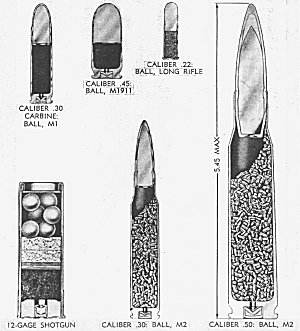Everything about Federal Primers
Table of ContentsSome Known Facts About Remington Primers.Primers For Sale Things To Know Before You Get ThisThe Definitive Guide for Winchester PrimersThe 9-Second Trick For Rifle PrimersWhat Does Pistol Primers Do?
Element of the gun cartridge for starting propellant combustion In firearms as well as artillery, the primer () is the chemical and/or tool liable for starting the propellant combustion that will certainly press the projectiles out of the weapon barrel. In very early black powder weapons such as muzzleloaders, the guide was essentially the same chemical as the major propellant (albeit usually in a finer-powdered form), but put right into an outside flash pan, where maybe sparked by an ignition source such as a slow-moving suit or a flintlock Some muzzleloaders have primers like cap gun caps.
In artillery the primers are regularly a separate element, put inside the barrel to the rear of the major propellant chargebut there are various other instances of weapons, consisting of for instance some automated weapons, created to shoot cartridges with indispensable electrical primers.
4 Simple Techniques For Pistol Primers

This hole was full of carefully ground powder, which was then sparked with a hot coal or torch. With the advent of hand-held firearms, this came to be an unfavorable way of shooting a gun. Holding a burning stick while attempting to put a charge of black powder carefully down a barrel threatens, and trying to hold the gun with one hand while concurrently intending at the target as well as seeking the touchhole makes it extremely challenging to fire accurately. [] The very first attempt to make the procedure of shooting a little arm easier was the "matchlock".
The match was a slow-burning fuse made of plant fibers that were taken in a solution of nitrates, charcoal, and also sulfur, as well as dried out (https://relodprim3rs.bandcamp.com/album/relodprim3rs). This "slow-match" was sparked prior to the gun was required, and also it would slowly melt, maintaining a hot ash at the burning end. After the gun was packed and the touchhole keyed with powder, the burning tip of the match was positioned to make sure that the lock would certainly bring it into contact with the touchhole.
Some Known Incorrect Statements About Rifle Primers
This brought the suit down to the touchhole, sparking the powder - https://publicate.it/p/ZQq_Dv2CkJZI314068. With mindful interest, the slow-burning suit can be maintained melting for long periods of time, as well as the usage of the lock mechanism made fairly exact fire feasible. The next revolution in ignition modern technology was the "wheel-lock".

The covered flashpan likewise gave some ability to withstand poor weather condition. The wheel-lock appreciated only a brief period of appeal prior to being superseded by an easier, extra robust design.
Rumored Buzz on Winchester Primers
As the name suggests, the flintlock utilized flint as opposed to iron pyrite. The flint was held in a spring-loaded arm, called the "cock" from the resemblance of its activity to a pecking poultry. The cock turned through around a 90-degree arc and was held in the tensioned, or "cocked" position by a trigger. https://writeablog.net/relodprim3rs/h2-style-clear-both-id-content-section-0-pistol-primers-things-to-know.
The "half-cock" position held the dick halfway back, and also used a deep notch to ensure that shooting would certainly recommended you read not release the cock. Half-cock was a safety setting, made use of when filling, storing or carrying a loaded flintlock. The "full-cock" setting held the penis all the way back and was the placement from which the weapon was discharged.
It acted as both a flashpan cover and a steel striking surface area for the flint. The frizzen was hinged as well as spring-loaded to make sure that it would certainly secure in the open or shut setting. When shut, the striking surface area was positioned to ensure that the flint would certainly strike at the appropriate angle to create a trigger.
Not known Facts About Primers In Stock
The flintlock mechanism was less complex and stronger than the wheel-lock, as well as the flint and also steel offered an excellent, dependable resource of ignition. The flintlock stayed in armed forces service for over 200 years, and flintlocks are still made today for historical re-enactments as well as muzzle-loading target competition, and for hunters who delight in the additional difficulty that the flintlock offers.
By the middle of the 19th century, the percussion or caplock system was well established., as it was less complex and also much more reputable than the flintlock.
The flashpan and also frizzen were gotten rid of and also changed by a small, hollow straight cylinder (drum) screwed right into the bored-out and also tapped flash hole as well as lugging a "nipple" over which the cap can be fitted. A "hammer" which additionally had half-cock (for loading as well as applying the cap) and full-cock placements changed the dick.